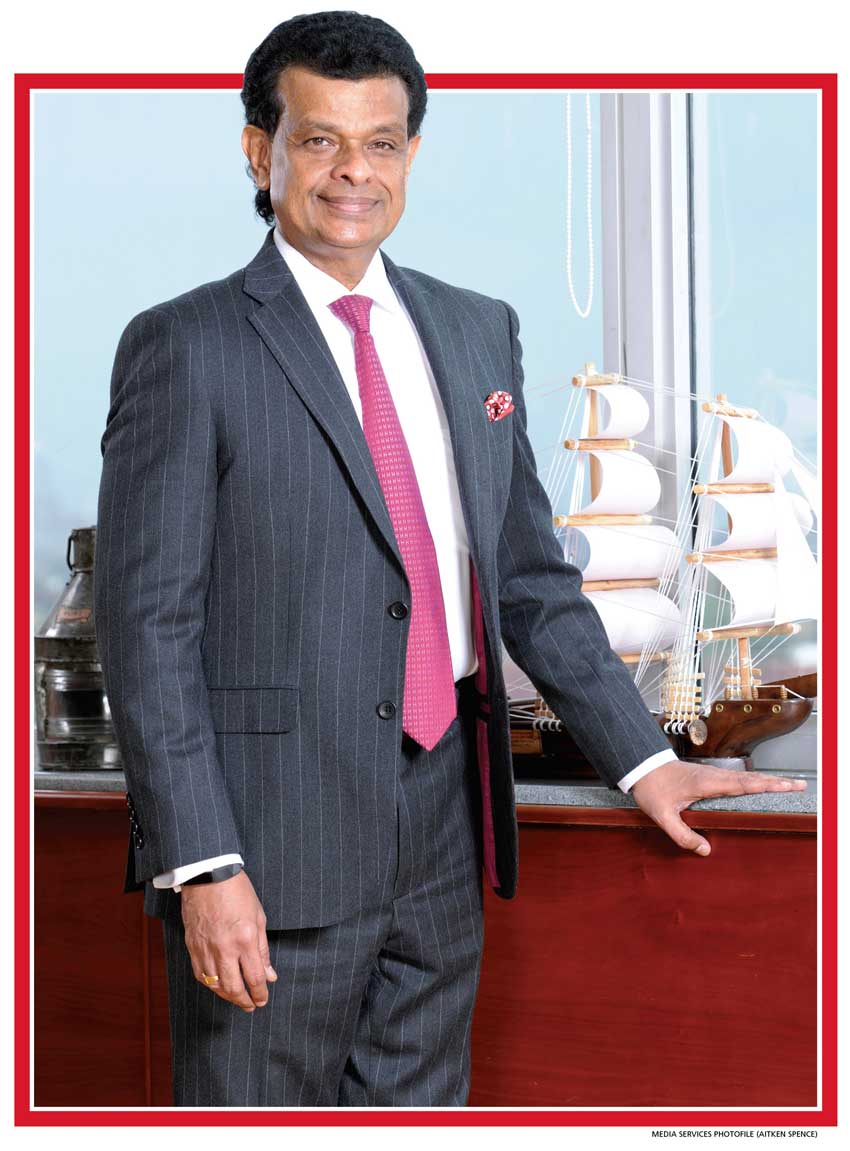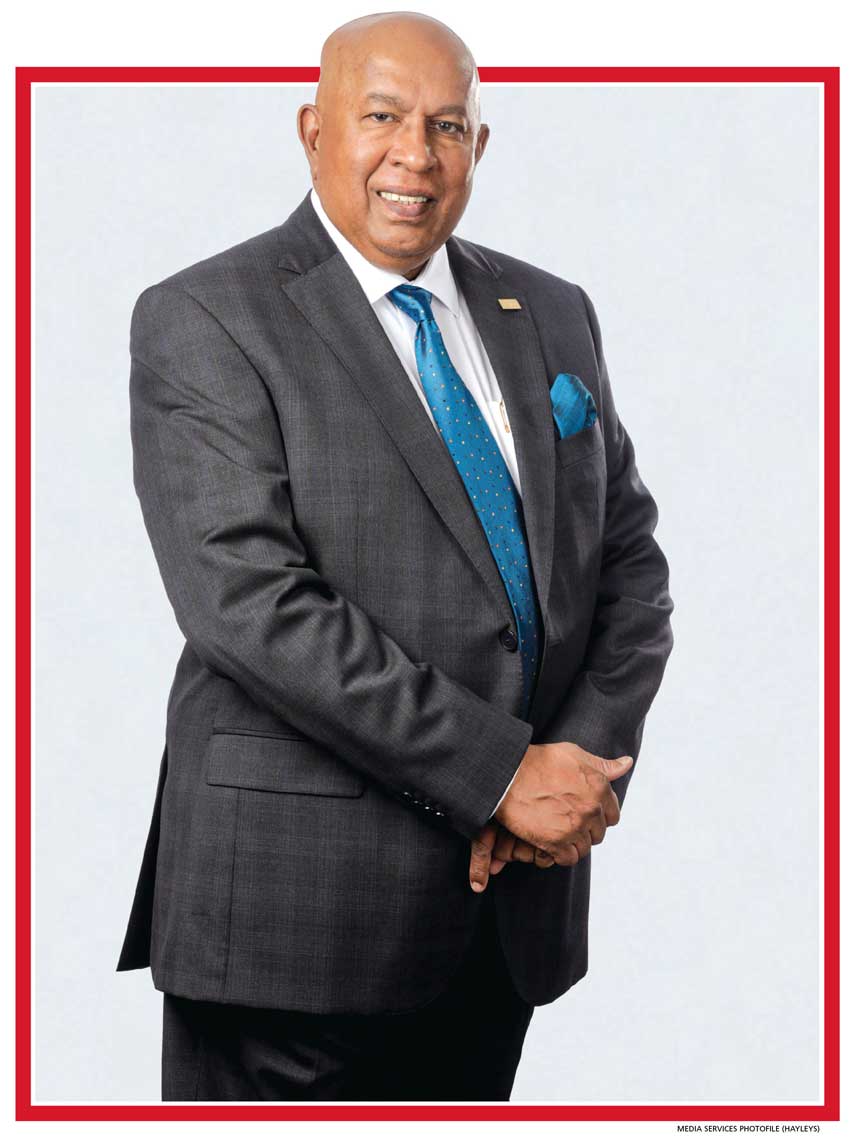COMPILED BY Yamini Sequeira
DR. PARAKRAMA DISSANAYAKE
Deputy Chairman/Managing Director
Aitken Spence
RETAIN TOP TALENT OR BE DAMNED
During the first half of 2018, the Port of Colombo was ranked as the fastest-growing container facility in the world. By the end of that year, the port handled seven million TEUs. By contrast, in 2022 it handled a total throughput of 6.8 million TEUs and witnessed a contraction of 5.3 percent.
Transhipment volumes – which account for 82 percent of the volumes handled by the port (i.e. 5.6 million TEUs) – also declined by 3.7 percent. Export containers witnessed a contraction of 12.5 percent and import containers dropped by 15.6 percent, all of which reflected the challenging operating environment.
Dr. Parakrama Dissanayake, the Deputy Chairman and Managing Director of Aitken Spence – who is also the first non-British International President of the UK-based Institute of Chartered Shipbrokers (ICS) – notes that “we became a transhipment hub of South Asia around three decades ago. Have we graduated to the status of a maritime and logistics hub since then?”
“The answer is ‘no.’ Unfortunately, immense damage has been inflicted on the maritime sector. To my mind, Sri Lanka has only two globally acceptable generic brands – Ceylon Tea and the Port of Colombo. The latter, which is among the top 25 container ports in the world, is going through an overall dip in confidence.”
He goes on to say that restrictions on imports have created a container imbalance, which in turn affects the sourcing of containers for exports. Shipping lines have been unable to convert the rupees collected from the provision of services into US Dollars, which have to be remitted to the shipping lines.
“The decline in export container volumes prevents shipping lines from covering their fixed costs at the port. On a positive note, the expansion of the Colombo South Deep Draft East Container Terminal by the Sri Lanka Ports Authority (SLPA) has continued and construction work on the Colombo West Container Terminal has commenced,” he muses.
Dissanayake explains: “Ports such as Colombo should be mindful of the rising importance of Asia and Southeast Asia, led by the five largest economies – Indonesia, Malaysia, Singapore, the Philippines and Thailand. Having control and management over the entire supply chain is bound to replace mere scale in the maritime and logistics sector.”
Considering its strategic location and the fact that Colombo South Harbour is the only deep draft container port in South Asia, the pre-eminent position of the Port of Colombo as a transhipment hub can continue, he feels, provided efficiency and effectiveness are not compromised.
During the latter part of last year and the beginning of 2023, liner freight rates tumbled to pre-pandemic levels. Drewry – an independent maritime research consultancy – estimates that container shipping that raked in a profit of US$ 290 billion in 2022 will reach only 15 billion dollars this year.
Key trends to watch other than profits will be an easing of port congestion over capacity, tighter controls over costs, and mergers and acquisitions.
He cites improving the ease of doing business as being imperative: “Sri Lanka is currently ranked No. 99, compared to Singapore at number two and the UAE in 16th place. We also have to improve our ranking of No. 94 in the [World Bank’s] Logistics Performance Index (LPI).”
“Besides, the authorities should understand that the competition is at international level and the three container terminals – Jaya Container Terminal (JCT), South Asia Gateway Terminals (SAGT) and Colombo International Container Terminals (CICT) – should, as they did in 2018, collectively reposition the Port of Colombo to regain confidence among clients. The regulatory regime should be investor friendly too,” he explains.
The brain drain is impacting the logistics sector too. Dissanayake asserts that “the bedrocks of the maritime and logistics sector are the millennials and gen X. The current economic environment is not helping us retain top talent. Human talent can make or break an organisation – this is the hard truth.”
He believes that 2023 will be yet another challenging year for the sector: “Freight rates have declined exponentially, which will have an adverse bearing on service providers in the maritime and ports sector.”
“Stabilisation of our economy is a sine qua non to overcome these challenges,” Dissanayake concludes.
The current economic environment is not helping us retain top talent. Human talent can make or break an organisation – this is the hard truth





